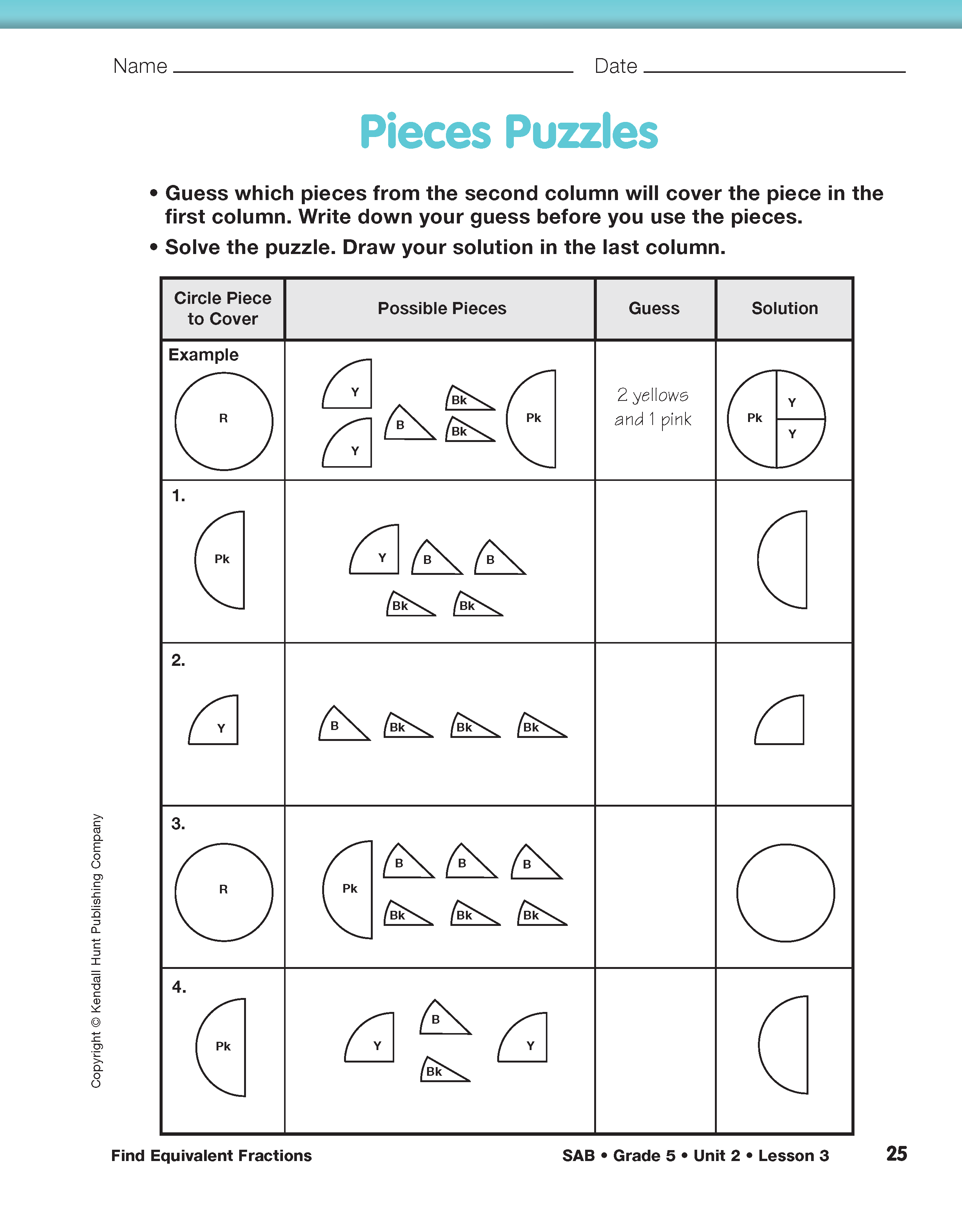Find Equivalent Fractions
Est. Class Sessions: 2–3Developing the Lesson
Part 1. Fraction Puzzles
Ask students to take out their red, pink, yellow, blue, and black circle fraction pieces and put the rest away. Figure 2 shows the pieces and the way that they are represented in the student pages. Give students a few minutes to compare the pieces and to find the relationships among them. Tell students that they are going to solve puzzles with the pieces. Using the display circle pieces, place a red circle on the display followed by 1 pink, 1 blue, 2 blacks, and 2 yellow pieces.
Present the following puzzle:
Ask students to discuss their guesses with a partner, write down the number of each piece in their guesses, and prepare a verbal explanation for their choices. When all the students have written down their guesses, ask them to solve the puzzle using the pieces.
Ask a pair of students to tell the class their guess, how they decided on it, and then show the solution using the display pieces.
Ask them to turn to the first Pieces Puzzles page in the Student Activity Book.
Using a display of the page, discuss the directions:
Assign Questions 1–4. Discuss students' solutions as they work in small groups. See the Meeting Individual Needs box for sample prompts.
Complete this part of the lesson by asking students to answer Questions 5–8 in the Student Activity Book. These questions ask about the relationships between the red, pink, yellow, blue, and black pieces.













